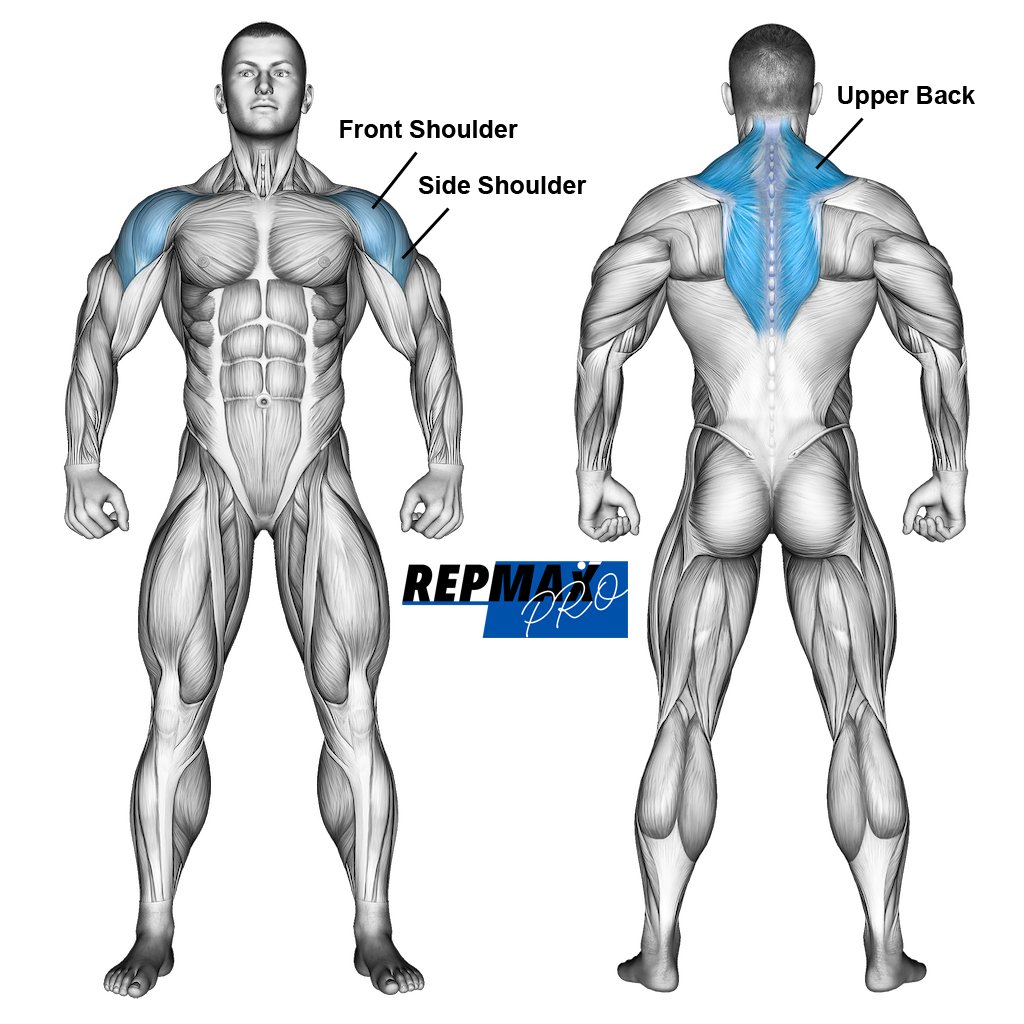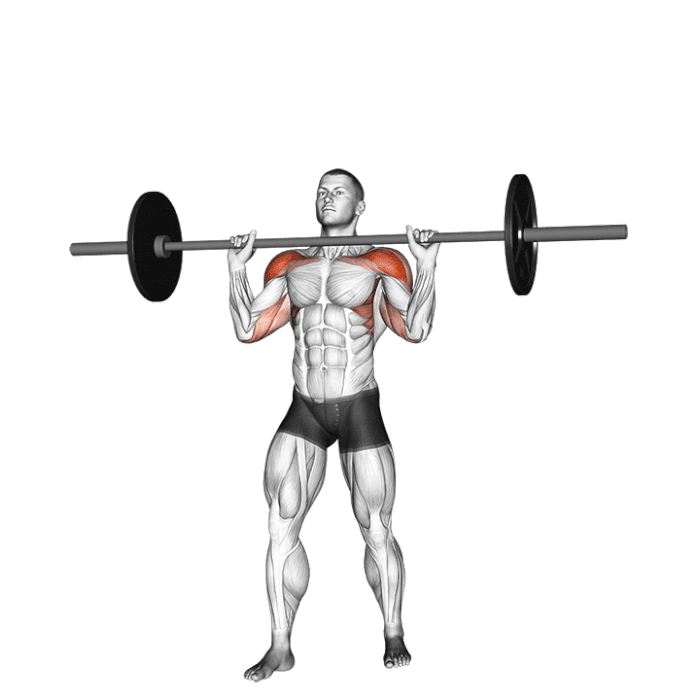Dumbbell Decline Triceps Extension
The Dumbbell Decline Triceps Extension is a highly effective exercise that focuses on building strength and mass in the triceps muscles. By performing this exercise on a decline bench, you place the triceps under a unique angle of tension that emphasizes the long head of the triceps, contributing to greater muscle development and definition. This variation provides a different challenge compared to traditional triceps extensions and is perfect for anyone looking to add variety to their arm workout.
The Dumbbell Decline Triceps Extension involves lying on a decline bench with a pair of dumbbells and extending your arms overhead, isolating the triceps. This movement is beneficial for increasing strength and size in the triceps, improving overall arm aesthetics and upper body performance.
Targeted Muscle Groups

Primary Muscles:
- Triceps Brachii (Long Head): The long head of the triceps is the main target in this exercise. The decline angle puts the muscle under greater tension, allowing for enhanced growth and strength.
Secondary Muscles:
- Triceps Brachii (Medial and Lateral Heads): While the long head is the focus, the medial and lateral heads of the triceps are also engaged during the extension movement.
- Forearms: The forearms play a secondary role in stabilizing the dumbbells and controlling the movement.
Equipment Needed
- Decline Bench: The decline bench should be set at an appropriate angle, usually between 30 and 45 degrees.
- Dumbbells: A pair of dumbbells is required for this exercise. Choose a weight that allows you to maintain proper form while challenging your triceps.
How to Do the Dumbbell Decline Triceps Extension: Step-by-Step Guide
Step 1: Setup
- Adjust a decline bench to a 30-45 degree angle. Sit down on the bench and secure your feet under the foot pads to stabilize yourself during the exercise.
- Grab a pair of dumbbells and lie back on the bench. Position yourself so your head is lower than your torso, and maintain a stable position throughout the movement.

Muscles used in the military press.
Illustration credit © Aliaksandr Makatserchyk
Step 2: Starting Position
- Hold the dumbbells with a neutral grip (palms facing each other) and extend your arms directly above your chest. Your arms should be fully extended, and your elbows should remain close to your head throughout the movement.
- Engage your core and keep your lower back pressed into the bench to maintain stability.
Step 3: Execution
- Concentric Phase (Lowering): Begin by bending your elbows, lowering the dumbbells in a controlled manner behind your head. Keep your upper arms stationary and only move your forearms.
- End Position: Lower the dumbbells until you feel a deep stretch in your triceps, stopping just before the weights reach shoulder level or touch the bench.
- Eccentric Phase (Lifting): Using your triceps, extend your arms back to the starting position, ensuring that you maintain control of the dumbbells throughout the movement.
Step 4: Repeat
- Perform the desired number of repetitions, maintaining proper form and focusing on the contraction of your triceps during each rep.
Recommended Reps and Sets
- Beginners: 3 sets of 8-10 reps
- Intermediate: 3-4 sets of 10-12 reps
- Advanced: 4 sets of 12-15 reps, focusing on slow and controlled movements for maximum engagement
Pro Tips for Success
- Focus on the Stretch: One of the key benefits of the decline angle is the increased stretch on the long head of the triceps. Make sure to lower the dumbbells to a point where you feel a deep stretch without sacrificing form.
- Keep Elbows Tight: Keeping your elbows close to your head throughout the movement ensures maximum triceps activation and prevents shoulder involvement.
- Control the Movement: Avoid using momentum to lift the weights. Perform the exercise with slow, controlled movements to maximize time under tension, which is crucial for muscle growth.
- Choose the Right Weight: Don’t go too heavy with the dumbbells. This is an isolation exercise that requires precision and control, so select a weight that challenges your muscles but doesn’t compromise your form.
Common Mistakes to Avoid
- Flaring the Elbows: One of the most common mistakes in triceps extensions is allowing the elbows to flare out. This reduces triceps activation and can lead to shoulder strain. Keep your elbows locked in close to your head for optimal results.
- Using Too Much Weight: Lifting too heavy can cause you to use improper form or rely on momentum, which reduces the effectiveness of the exercise. Focus on lighter weights and controlled reps.
- Arching the Back: To maintain proper posture, engage your core and keep your back flat against the bench. Arching your back can lead to unnecessary strain on your lower spine.
- Rushing Through Reps: Avoid speeding through the exercise. Slow and controlled reps are more effective at engaging the triceps and promoting muscle growth.
The Dumbbell Decline Triceps Extension is a fantastic isolation exercise that specifically targets the long head of the triceps, making it a valuable addition to any upper-body workout routine. By performing this exercise on a decline bench, you place the triceps under a unique angle of tension, which leads to a more effective stretch and contraction. Whether you are a beginner or an advanced lifter, this exercise can help you build stronger and more defined triceps when performed correctly.
By focusing on proper form, controlling the movement, and avoiding common mistakes, you can maximize the benefits of this exercise. Incorporate the Dumbbell Decline Triceps Extension into your regular workout routine to achieve better arm development and enhance your overall upper-body strength.
